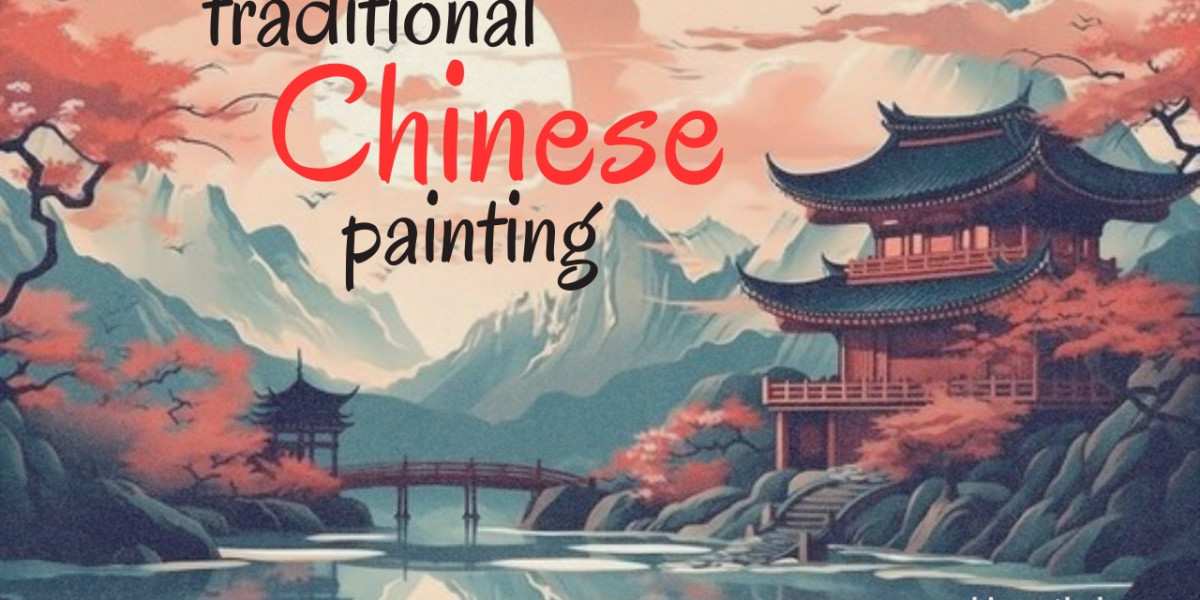Traditional Chinese painting, known as guóhuà (国画), reflects the spirit, philosophy, and history of China through ink, brush, and symbolism. At China Art Hub, we explore this heritage to provide artists, collectors, and cultural enthusiasts with the finest insights, resources, and traditional supplies rooted in centuries of artistic evolution.
What is Traditional Chinese Painting?
Traditional Chinese painting is one of the oldest continuous artistic traditions in the world. Unlike Western oil painting, it uses natural elements such as:
Ink and brush on rice paper or silk
Calligraphic strokes instead of shading
Monochrome or subtle color palettes
Symbolism and spiritual depth
There are two primary styles:
Gongbi (工笔) – Detailed and meticulous brushwork, often used for portraits or birds-and-flowers.
Xieyi (写意) – Freehand style, more expressive and abstract, often used in landscapes and animals.
Core Elements in Traditional Chinese Painting
| Element | Description |
|---|---|
| Brushwork | Foundation of expression, each stroke holds emotional depth |
| Ink tones | Varying shades from black to light grey create dimension and movement |
| Composition | Balances emptiness and fullness, often using negative space effectively |
| Themes | Nature, immortality, human virtues, Confucian and Daoist principles |
| Perspective | Uses a shifting viewpoint (not fixed), unlike linear perspective in the West |
How China Art Hub Supports Traditional Chinese Art
At China Art Hub, we believe that tradition should evolve through knowledge and access. Here's how we contribute:
1. Curated Art Supplies
Professional-grade rice paper, brushes, ink stones, and Chinese pigments
Supplies tailored for both Gongbi and Xieyi styles
2. Educational Content
Tutorials from expert Chinese painters
Articles on historical developments and contemporary relevance
3. Artist Collaboration
Partnering with traditional and modern artists to keep ancient techniques alive
Supporting young talent to explore heritage art forms
FAQs on Traditional Chinese Painting
Q1: Is Chinese painting still practiced today?
Yes, traditional painting remains vibrant in China and globally. Modern artists blend classical methods with new themes, making it a living art form.
Q2: Can beginners learn traditional Chinese painting?
Absolutely. China Art Hub provides beginner guides and step-by-step resources to help anyone start their journey.
Q3: What are common symbols in traditional Chinese painting?
Plum blossom – resilience
Lotus – purity
Pine tree – longevity
Crane – immortality
Q4: How is traditional Chinese painting different from Western painting?
Chinese painting prioritizes emotion, nature, and minimalism. It focuses on spiritual connection rather than realism.
Key Painting Techniques Beginners Should Learn
Bone Method (骨法): Mastery of brush technique and structure
Calligraphy Integration: Painting and calligraphy go hand-in-hand
Ink Control: Learning the various ink dilutions to create tone
Composition Training: Understanding visual balance using negative space
Historical Periods of Chinese Painting
| Dynasty | Significance |
|---|---|
| Tang (618–907) | Formal development of landscape painting |
| Song (960–1279) | Rise of scholarly painting, naturalism, and detail |
| Yuan (1271–1368) | Literati painters emphasized personal expression |
| Ming (1368–1644) | Technical mastery and restoration of classical forms |
| Qing (1644–1912) | Innovation through merging traditional and new styles |
Art Supplies Checklist for Traditional Chinese Painting
Brush types: Soft goat hair, stiff weasel hair, and mixed brushes
Ink: Solid ink sticks and inkstones for grinding
Paper: Xuan paper (shuen paper), known for its absorbency
Mounting materials: Silk scrolls, calligraphy mounts
Who Should Explore Traditional Chinese Painting?
Art students learning classical techniques
Collectors seeking meaningful cultural works
Educators and researchers interested in cultural preservation
Decorators wanting to infuse Eastern aesthetics into interior design
Final Thought
Traditional Chinese painting is not just an art form—it is a philosophy expressed through brush and ink. At China Art Hub, we bridge this cultural legacy with modern curiosity, offering tools, stories, and education for anyone passionate about the timeless beauty of Chinese art.






